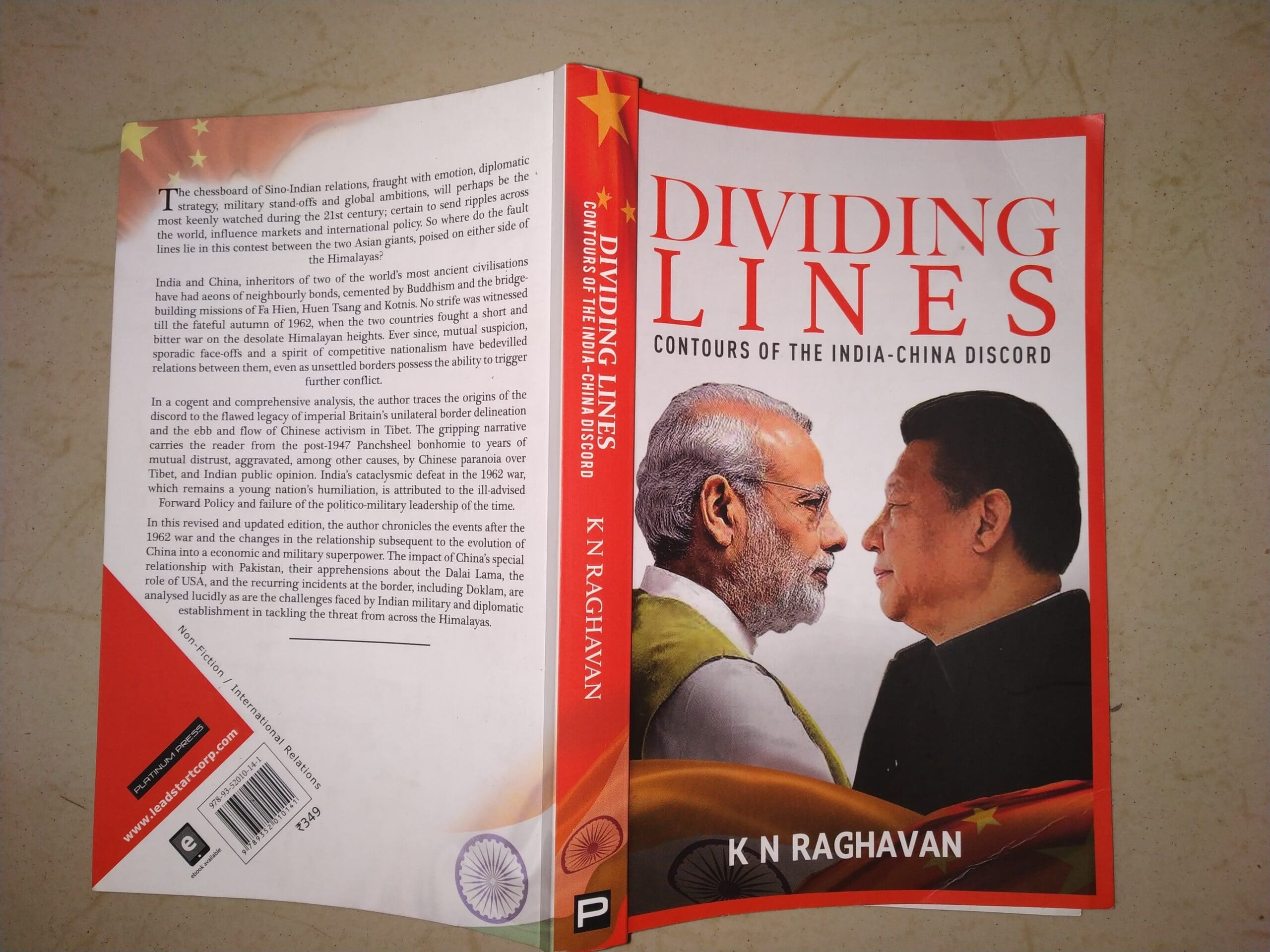
Titel: Dividing Lines: Contours of India-China Conflict.
Author: KN Raghavan
Paperback: 386 pages
Publisher: Leadstart Publishing-Platinum Press; First edition (1 December 2012)
Language: English
ISBN-10: 9381836752
ISBN-13: 978-9381836750
Indian history depicts struggles of various leaders, sacrifice of innocent people and our soldiers courage. Mostly, Indian history shows most of its conflict with the East India Company and the British rule. The prime reason why I read this book was to grab knowledge about the other side of the Indian History that is unexplored by most of us. The book talks about the border war between the two nations that happened in 1962. Through our history textbooks, we know that India was stabbed in the back. But KN Raghavan describes this war elaborately in Dividing Lines through 12 chapters.
KN Raghavan has tried to search for unbiased facts and provides us with detailed information about the border war, circumstances that led to the war, the treaties offered and declined by both the nations, impact of the war and aftermath of it. The author has divided the chapter into various subheadings for easier navigation.
The author brings out the historic flows of Chinese activism in Tibet. After independence, Tibet had claimed all the territories on the boundary of India and Tibet which included Bhutan, Sikkim, Darjeeling and some parts of Ladakh. Due to this, the government of Tibet lost all the sympathy from the Indian Government. Pandit Nehru went out of his way to befriend China to foster as allies in the upcoming war. But, he ignored the Chinese military occupation of Tibet. Sardar Patel had already warned him through a written advice in November 1950. To consolidate the military hold in Tibet , Nehru allowed China to use Calcutta port facilities.
In 1954, when Nehru heard about the Chinese claims up to Ladakh. China had extended patrolling to the fake Indo-Tibet Border. He got furious and directed the printing of maps and ordered to erect check posts along the Indo-Tibet border according to the maps. This left little room for negotiation from the Chinese government. Apart from this, the Chinese suspected India’s involvement in Dalai Lama’s escape to India and India’s support for the Khampa rebellion. This ensures a diplomatic breakdown between the two nations and the war was inevitable. Sensing the failure in the war, Nehru was pressurized to issue a public statement to throw out the Chinese from the Indian territories along the border.
In the rest of the book, the author narrates about the civil-military alienation, forward policy by Nehru and the involvement of Chinese men like Thagla Ridge and Namka Chu. Though the book is described in detail, I felt the author should have focused more on the military strategy due to which I found it a bit monotonous. The author has done excellent research about the political and military details of both the nations leading to the conflict and aftermath. The author blames Nehru and its government for the start of the war and ignores the military condition of India. The author also blames the leaders. It’s quite an irony because the political leaders of the time did not have the required personality and did not make any effort to understand the ground situation. Besides, India was independent in 1947 which makes it difficult it to be ready for a war in the next 10 years when it is hardly recovering from the British Rule and World Wars.
The author seems too good at organizing the gathered information and facts in a systematic way. There are several facts stated in this book that are not easily available in public domain. Dividing Lines: Contours of India-China Conflict is a compact and elaborate book without missing any major details and reads well.

Be the first to comment